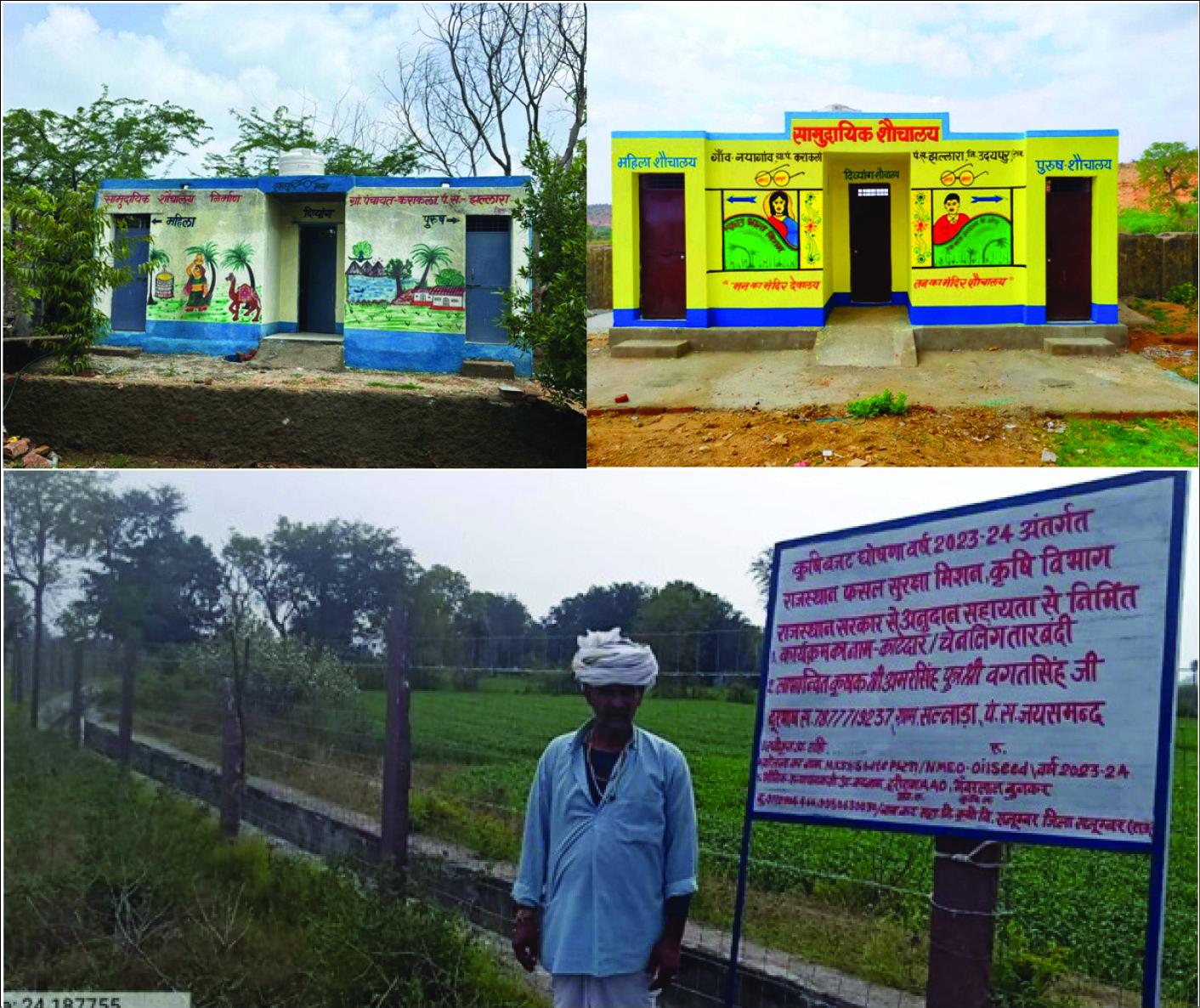Nexus of Good: A triumphant endeavour
By leveraging the Swachh Bharat Mission, Salumbar has been almost transformed into an ODF Plus district through participatory initiatives, solid and liquid waste management, and community involvement

The Swachh Bharat Mission (SBM) is being implemented in mission mode across the country. Similarly, the task was undertaken at the district level to make Salumbar a clean district. SBM requires the district to be ODF, and now the new concept is ODF Plus, where the aim is to go beyond the ODF tag and ensure complete solid and liquid waste management. Based on this methodology, the aim was to run the work in mission mode and ensure that Salumbar becomes an ODF Plus district.
Main departments
Rural Development and Panchayati Raj (RDPRD)
Aim and strategy
The aim of the initiative was to leverage the good work done under the Swachh Bharat Mission to make Salumbar district a clean and green district. As part of this, the administration undertook initiatives to make Salumbar district clean and green by involving panchayats, elected representatives, NGOs, and the general public. The district had already achieved ODF status in 2019, and the goal was to go beyond ODF status to make it an ODF+ district. The focus was on cleanliness with a view to ensuring complete liquid and solid waste management.
For this, participatory exercises were carried out in association with the community. Exercises such as the chapati diagram and transect walk were conducted to identify the core issues of the district. Consultative exercises led to the development of a Detailed Project Report (DPR), which outlined the necessary steps to ensure solid and liquid waste management. Solid waste management was achieved through compost pits, where recyclable material was treated to create manure. Non-recyclable material was collected by panchayats through door-to-door waste collection and treated at resource recovery centres. Liquid waste management was implemented through drains and soak pits. To increase community access to clean sanitary conditions, community service centres such as community toilets were also created.
For such a vast exercise to take place, it was necessary to involve every stakeholder. The public was involved in identifying problems through participatory exercises. Officers conducted transect walks in the village to identify the main problem areas and their solutions. The chapati diagram exercise was also conducted to involve the community. After this, a detailed project report for the village was prepared, and possible issues were discussed. The proposed solutions were explained to the community, and the final report was prepared and submitted to the panchayat. The panchayat then debated and discussed the issues, which were implemented after approval by the Gram Sabha.
Earlier, swachhta in villages was viewed through the narrow prism of constructing toilets. Toilets were often ignored, and the community primarily sought to use them to gain government benefits. A survey revealed that most of the toilets were being used for purposes other than swachhta. To ensure the proper implementation of the swachhta concept and proper waste management in villages, both liquid and solid waste management became necessary.
In addition to newspapers, print media, and electronic media were used to raise awareness about swachhta and strategies to achieve it. Community radio, along with nukkad nataks and kathputli shows, was also utilized to promote the theme of cleanliness. Social media platforms like WhatsApp, Facebook, and Twitter were employed to inform the community about cleanliness and the need for solid and liquid waste management. All IEC (Information, Education, and Communication) campaigns were conducted in the local language. Repeated messaging was used to emphasize the importance of swachhta. Through sustained and effective IEC campaigns, the district administration was able to turn this into a mass campaign.
Participatory exercise
RDPRD was the nodal department, and hence panchayats were the most important stakeholders. Through collaborative exercises, panchayats and the general public were motivated around the concept of cleanliness. District officers were made responsible for a few panchayats, where they were tasked with routine visits to motivate the people. NGOs were involved by asking them to mobilize the community. The best NGOs were encouraged and awarded at the district level for their work. Self-help groups of women were key units involved in house-to-house waste collection and running resource recovery centres. The media was also involved, and massive IEC campaigns were organized in the area. Expert visits in the field of sanitation were also arranged. Thus, the entire exercise was carried out in a participative and collaborative manner.
Results
By running this mission, the district has nearly achieved its ODF Plus status, with 592 out of 610 villages becoming ODF Plus. There has been an improvement in health outcomes, and people are realizing the importance of sanitation. Since this exercise has been participative, it has ensured transparent and accountable administration.
Views expressed are personal



